2023 Yamaha MT-10 SP Review
Motorcycle Test by Rennie Scaysbrook
I wouldn’t go so far as to say the base model 2023 Yamaha MT-10 is the perfect bike, but it’s pretty damn good.
At a smidge under $25K ($24,649 ride away), the base model represents excellent value in the 1000 cc nakedbike sector. But then you go looking at the other side of the dealership and notice there’s an MT-10 SP sitting over there with funky gold fork legs and a (in my opinion) rockin’ silver/black/blue paint job, and it’s less than 4K more at $28,499. Hmm…

Incidentally, in my current home of Southern California, the base model with its conventionally-adjusted KYB fork and shock and a different paint job costs $14,199 USD/$20,750 AUD (before taxes and dealer fees), while the SP costs substantially more at $17,199 USD/$25,144, again, before taxes, etc.
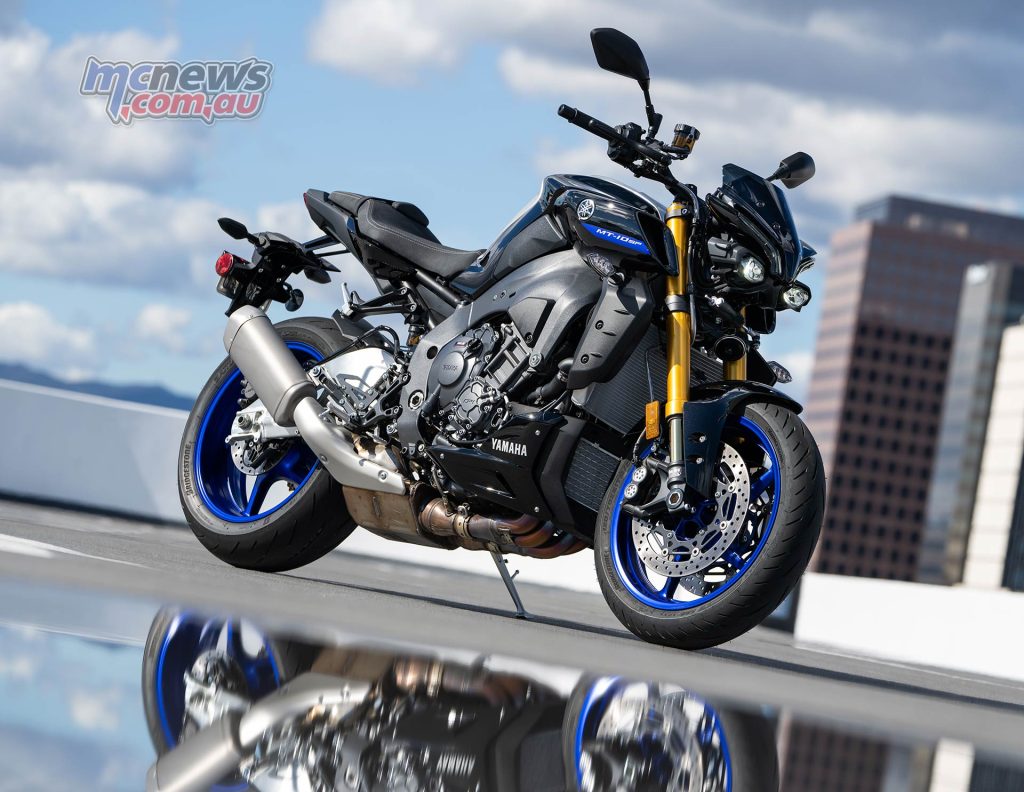
So in Australia the SP isn’t as expensive when compared to the base model in relation to other markets around the world. Plus, we have ride away prices in Australia, and don’t get slammed with dealer fees and taxes like they do in the Land of The Free/Fee. Small wins. Take ’em when you can get ’em.
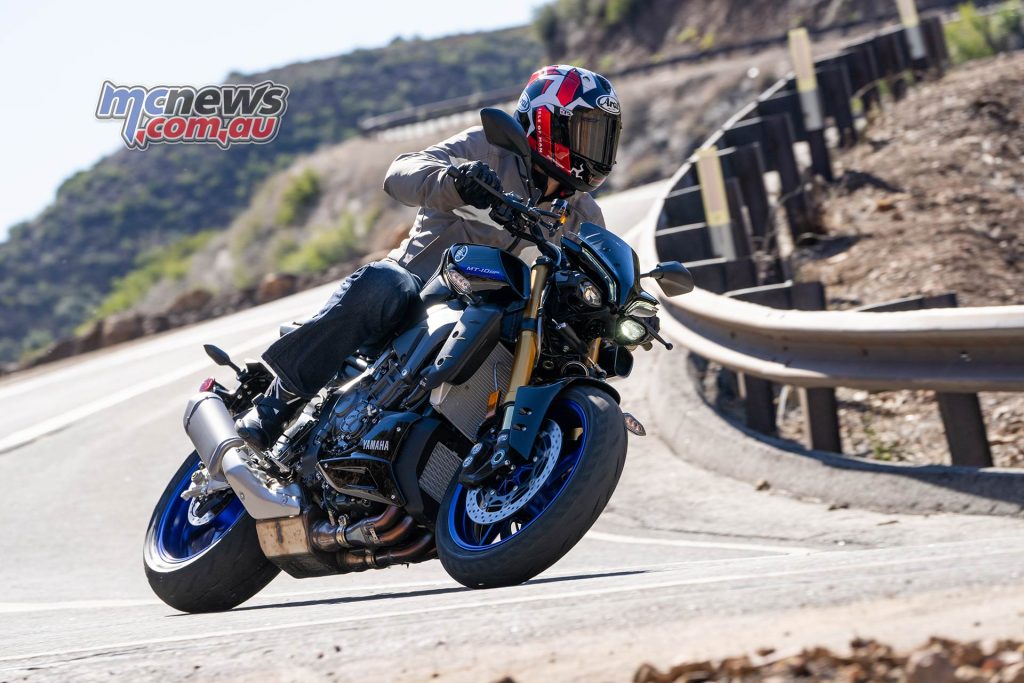
Anyway, back to the SP.
There’s really no big difference between the base model and the SP aside from the enhanced ride quality offered by the shiny Swedish Ohlins “next generation” semi-active electronic suspension with revised damping for both the 43 mm fork and shock, that trick paint job, and the steel braided brake lines that Yamaha hopes will improve the, err, lacklustre performance of the standard MT-10’s stoppers — which it does, but not by much.

Perhaps this is why Yamaha Australia has priced the bikes so, because when all is broken down, the base and SP are very close. You still get the same chassis and swingarm, the same motor, same electronics in the six-axis IMU-controlled lean sensitive traction control, slide control, wheelie control, Engine Brake Control, and Brake Control, plus cruise control.
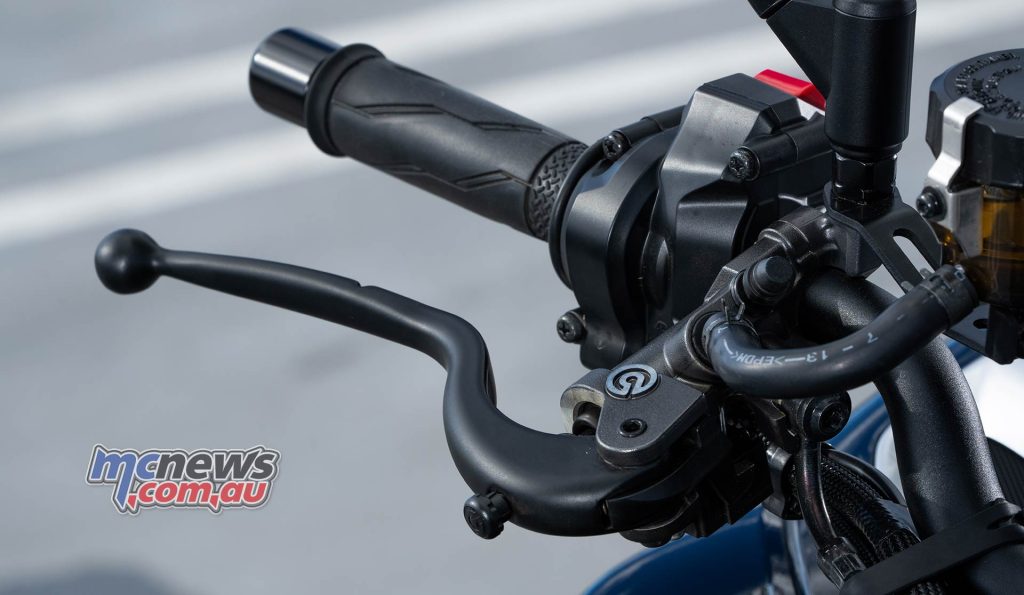
However, no heated grips on a premium nakedbike costing almost $30K feels like penny pinching to me. Yamaha does offer heated grips (and a heated seat) as an accessory, but it’s just one more thing you need to buy…
That complaint aside, there’s very little you can’t do on an MT-10 SP that you couldn’t do on a YZF-R1. That’s because the MT-10/SP has raided the electronic parts bin extensively in its construction, right down to the superb up and down quick-shifter that comes as standard fitment on both models.
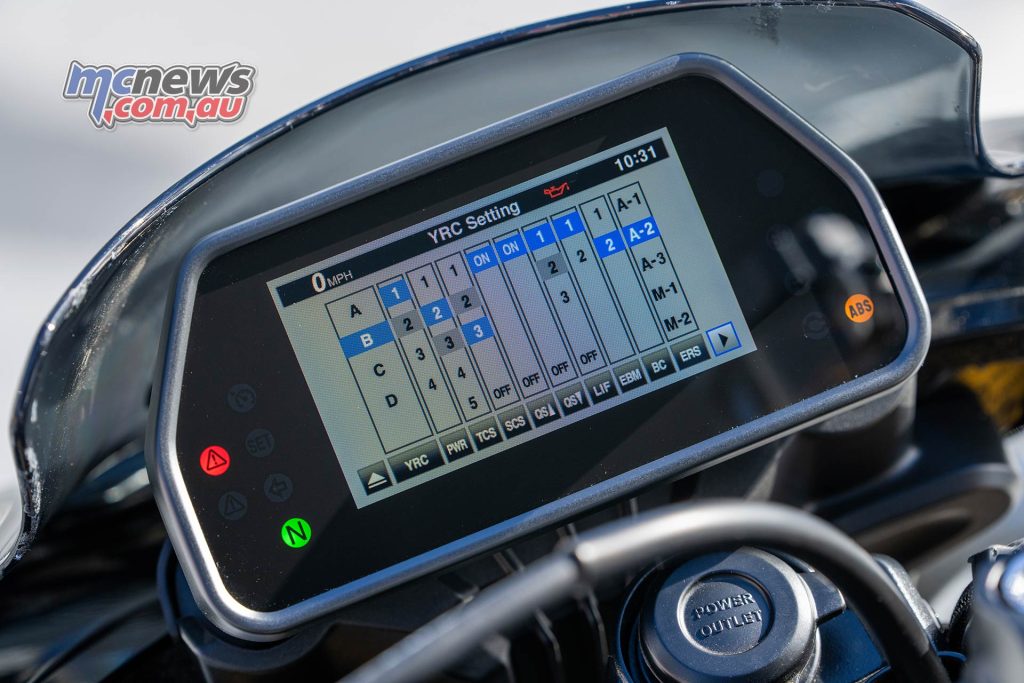
The user experience with the electronics is one of the better ones out there, given the amount of information and parameters you can play with.
The R1 can be thanked for this, as quick adjustments to TC/engine brake/wheelie control are dealt with much easier than on something like a Ducati Streetfighter/Panigale. And if you turn the wheelie control off completely, you’ll be in for a hell of a good time on your way to work.
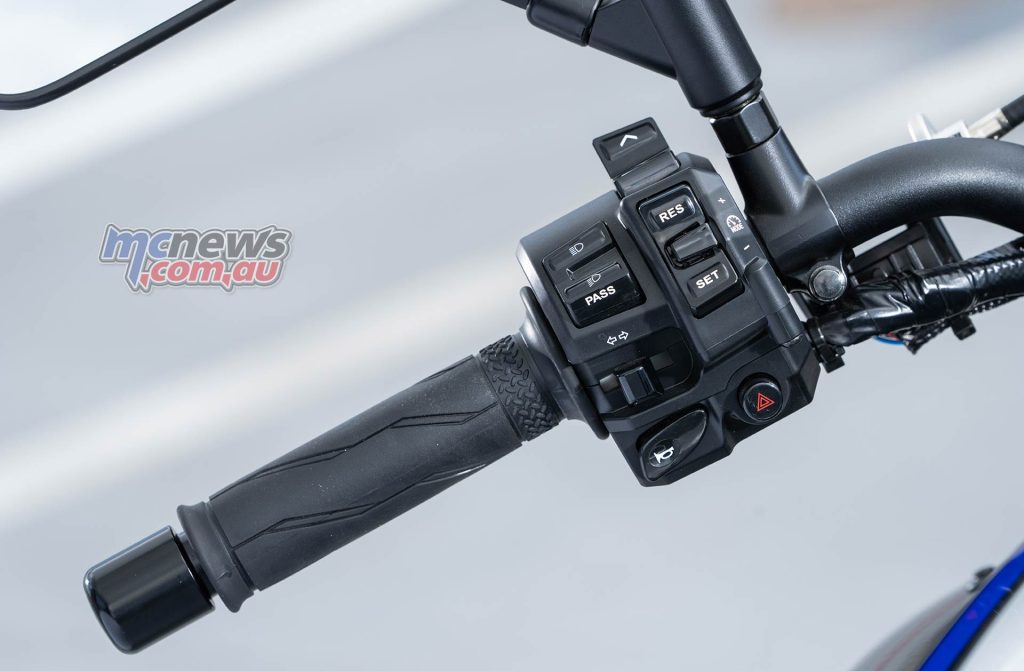
I must be honest and admit I did not feel the ride quality between the KYB-equipped base model and the Ohlins on the SP was dramatically different. One of the big compliments I paid the base model was how well Yamaha got the KYB fork and shock sorted for most types of riding we encountered during our road test.
It handled most situations, from slow pot-holed traffic to mountain passes extremely well. Commuting comfort was likewise well sorted, meaning whatever boxes in between were likely ticked, too.
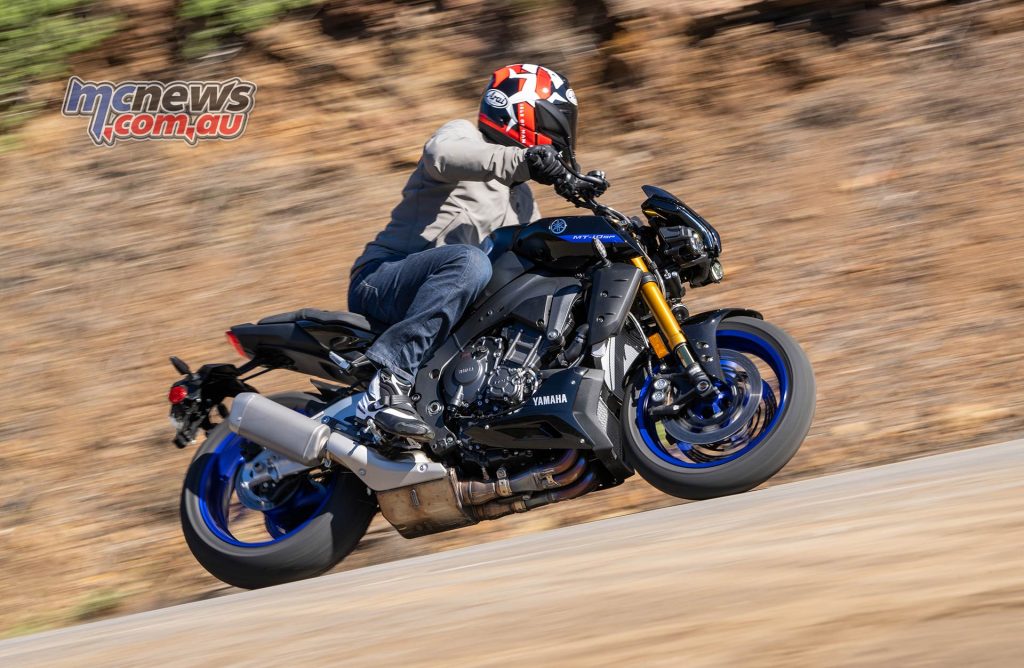
The semi-active Ohlins has the ease of adjustment on its side, which is especially important if you’re not familiar with flat blade screwdrivers and clickers, and chopping between modes if quite simple. They offer three stages of automatic damping (A1, A2, A3), each mode a slightly stiffer base level than the one before it with compression and rebound damping automatically adjusted as you ride.
Conversely, there are three manual modes of M1, M2, and M3, in which you can individually set your own electronic “clickers” and save them for future use — i.e M3 is your softer street mode, M2 is your everyday mode, and M1 is your Mount Hotham mode.
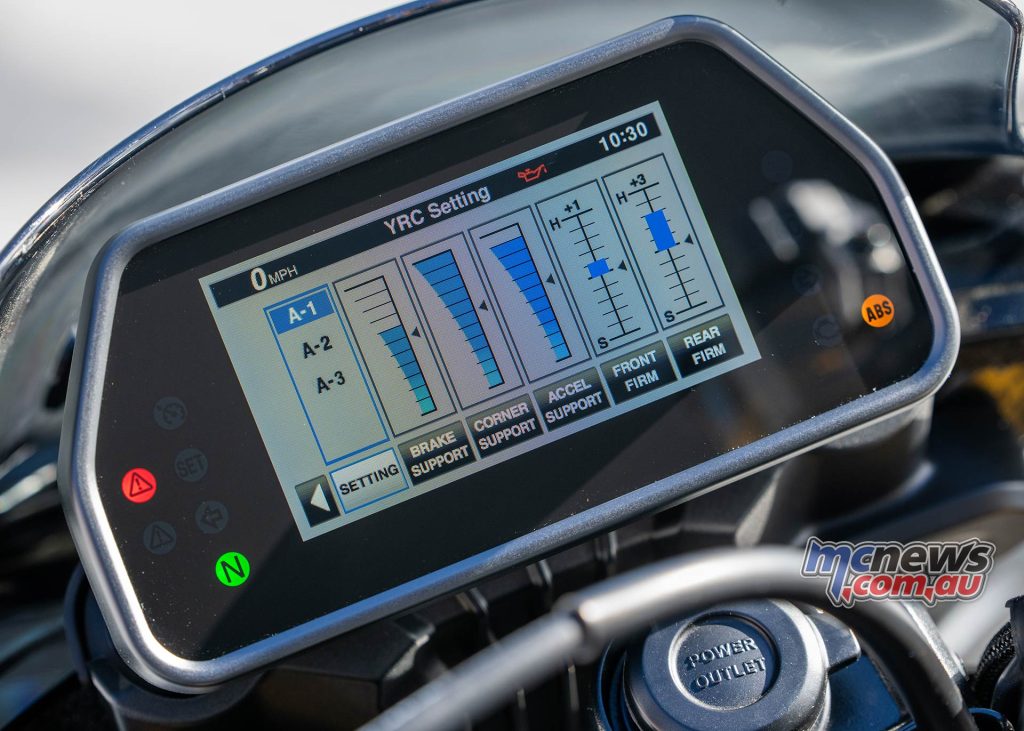
During my tenure with the SP, I left it almost solely in A2 mode, which was settled on after a day’s ripping up the Malibu hillsides and their $50m mansions. A2 provided a good level of composure under brakes without being overly stiff on acceleration — and you have to remember, these suspenders are adjusted (either in manual or automatic) by “support” or braking support, acceleration support, etc, not your traditional compression, preload and rebound.

Once you’re settled in on your favourite mode, in most cases I’ve experienced, riders tend to leave them there. Having all those other modes is kind of like having 50 TV channels but only watching two—the rest are nice to have, but they’re unlikely to be watched — because you know what you like.
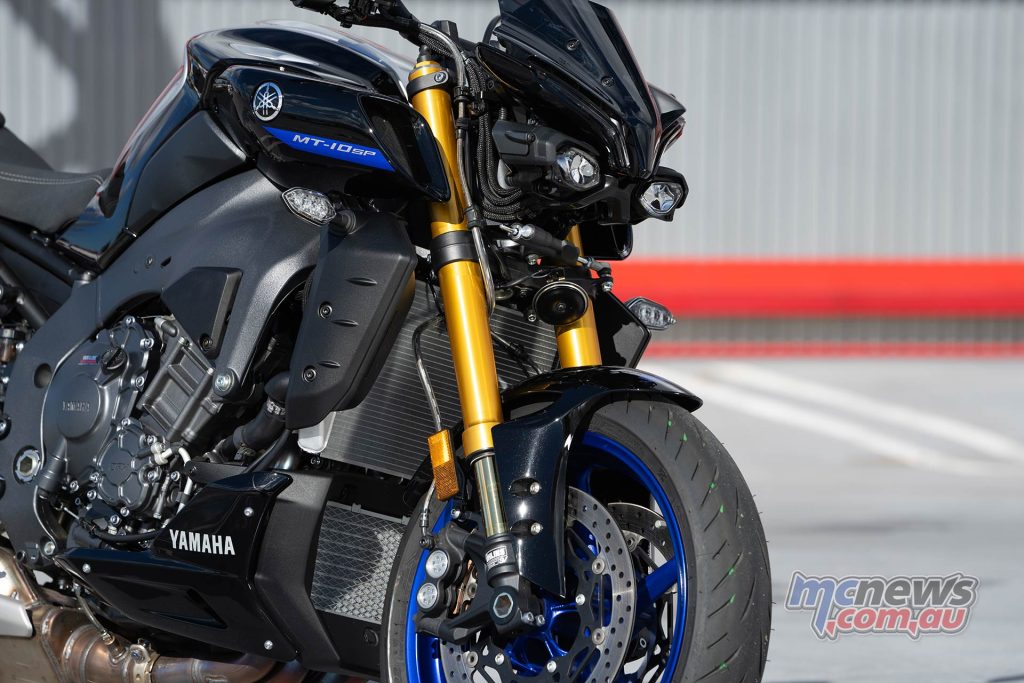
The agility I so loved with the base model has been enhanced with the SP model. The chassis darts from corner to corner with unerring ease and you’re encompassed in quite the comfortable riding position, one that doesn’t feel as hard edged as an Aprilia Tuono V4 Factory but sharper and deserving of more respect than the company’s own MT-09, which feels like a bit of a toy in comparison.
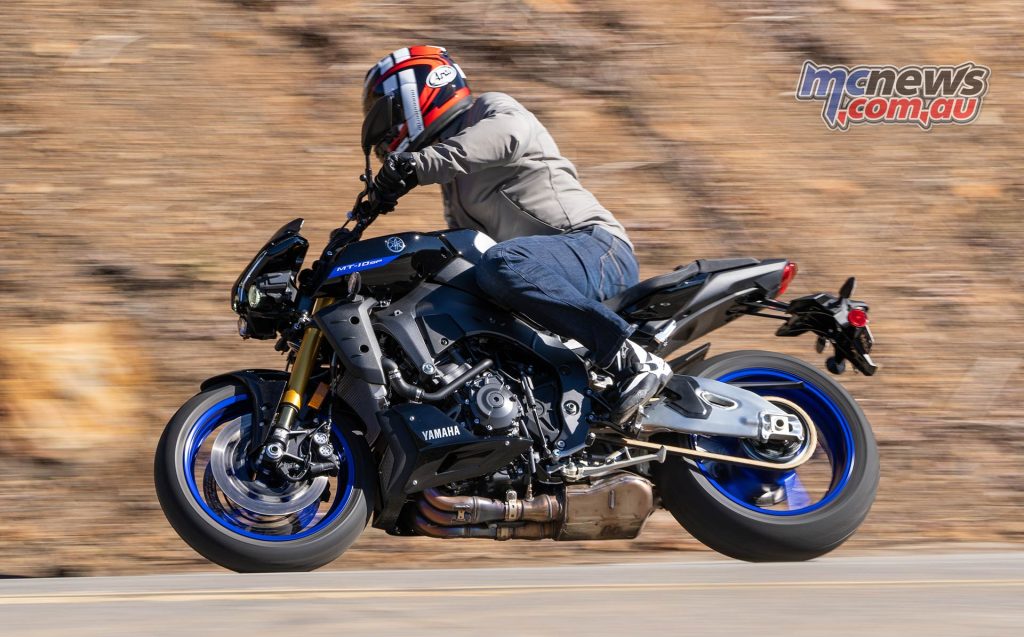
Unfortunately, Yamaha is still lacking (although not as much as in standard trim) in the braking department despite fitting braided brake lines to the SP. The base model’s brakes are not up to the performance the rest of the machine provides, although the SP is a little better.
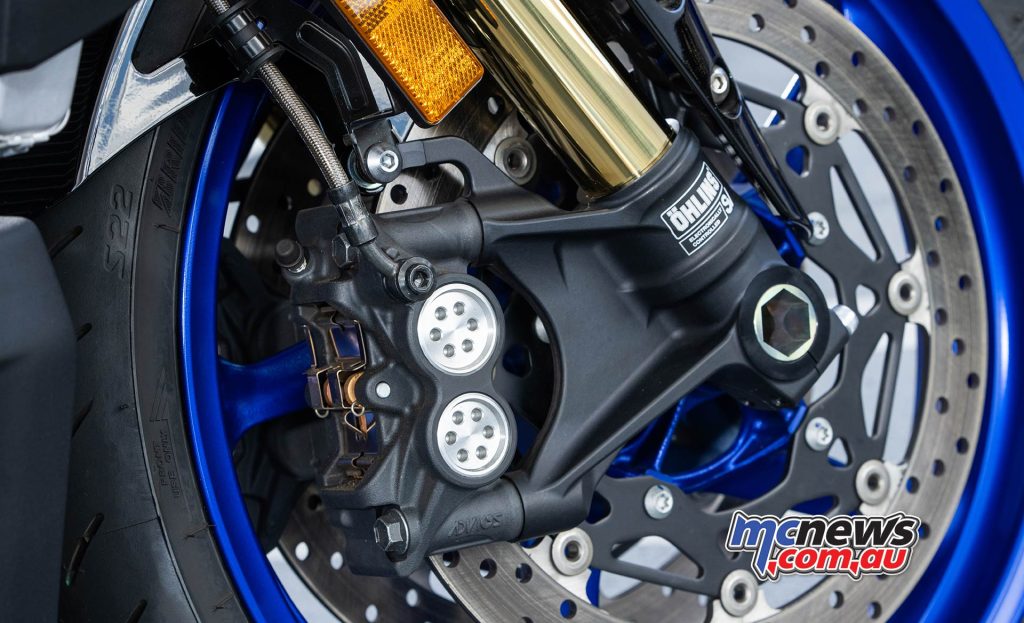
It seems odd for a bike with such a performance persona for this to be a continual problem—if you’ve ever ridden an R1M with standard brakes you’ll know how quickly they fade on track — I wish Yamaha could sort this on their premium fast bikes.
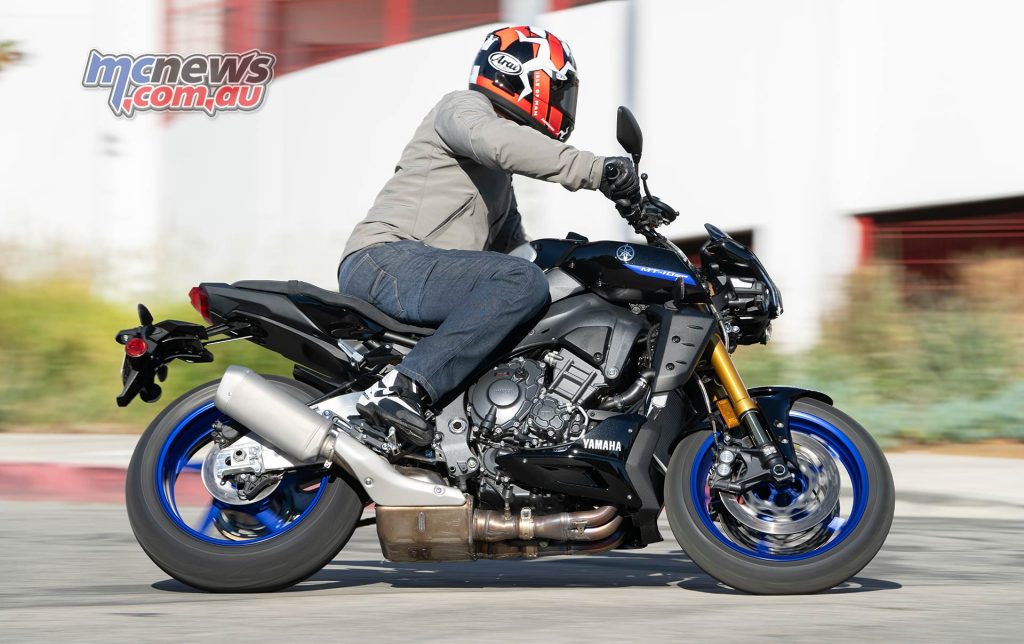
Hey, Moto Guzzi has fitted excellent brakes with a quality master-cylinder to their Mandello S which hasn’t got a 10th of the sporting prowess an MT SP does, so perhaps Yamaha should just admit defeat and head to Italy and purchase those brakes with the big B on them, and get a race-spec master-cylinder on there, too.
With your suspension and throttle modes selected, which for me was B mode as A mode’s throttle hit too hard for my liking, you’re off to explore that work-of-art engine Yamaha created.
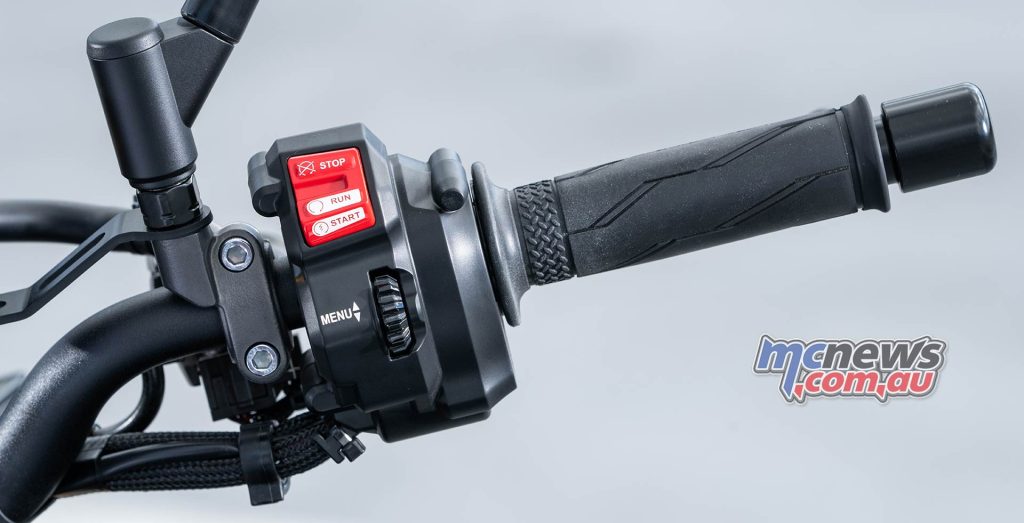
With a claimed 163hp on tap (in real world terms it’s about 150 hp at the tyre), the MT-10 SP has the kind of performance that will keep absolutely anything on the road in sight until the point where you can incinerate your licence for the next 15 years.
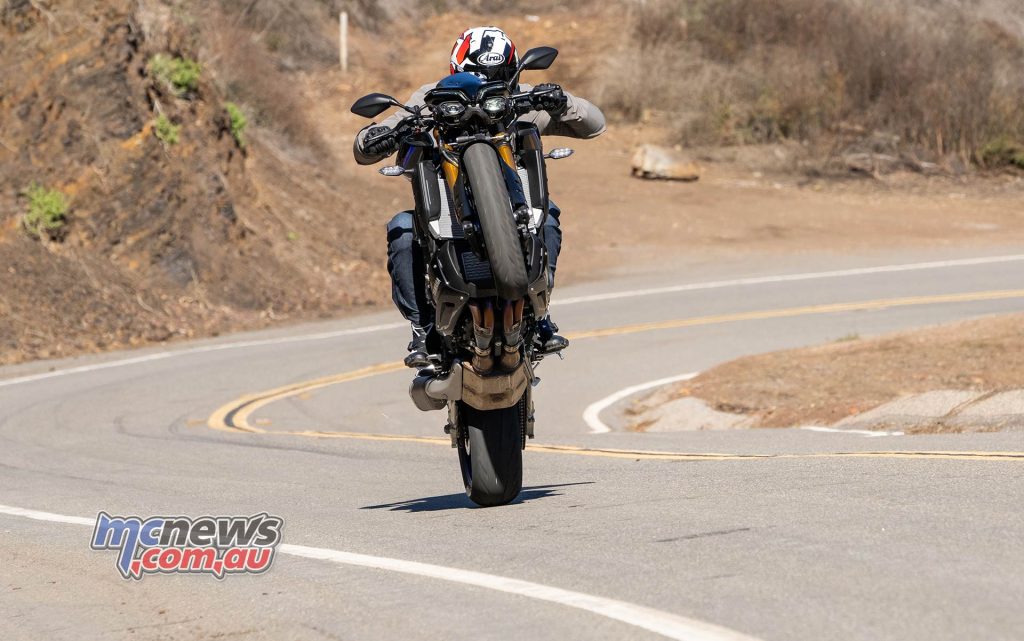
It’s not as ungodly fast as a Ducati Streetfighter V4 S, nor does it have the sex appeal (or expense, for that matter), but what the MT-10 SP does have is beautiful usability, something pretty overlooked in the 1000 cc hyper-naked sector.
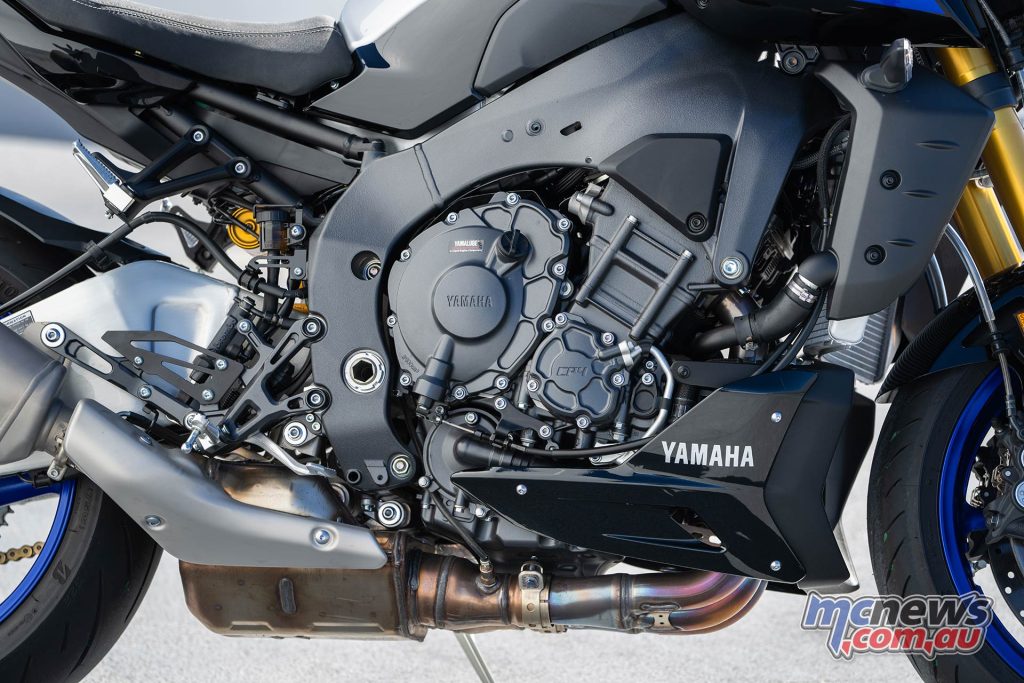
The crossplane crank motor’s ease of use and overall performance has been refined in Gen II format, although in A mode it still retains some of the slightly snatchy feeling at the throttle from fully closed. That’s why B mode for me was on the money, as it smoothed out that initial torque hit nicely without giving the anaemic feeling associated with lower Rain-specific modes.
So, is the MT-10 SP worth the extra dosh. In Australia, given how close they are in price, absolutely. In America, I’m not so sure, thanks to the financial difference.
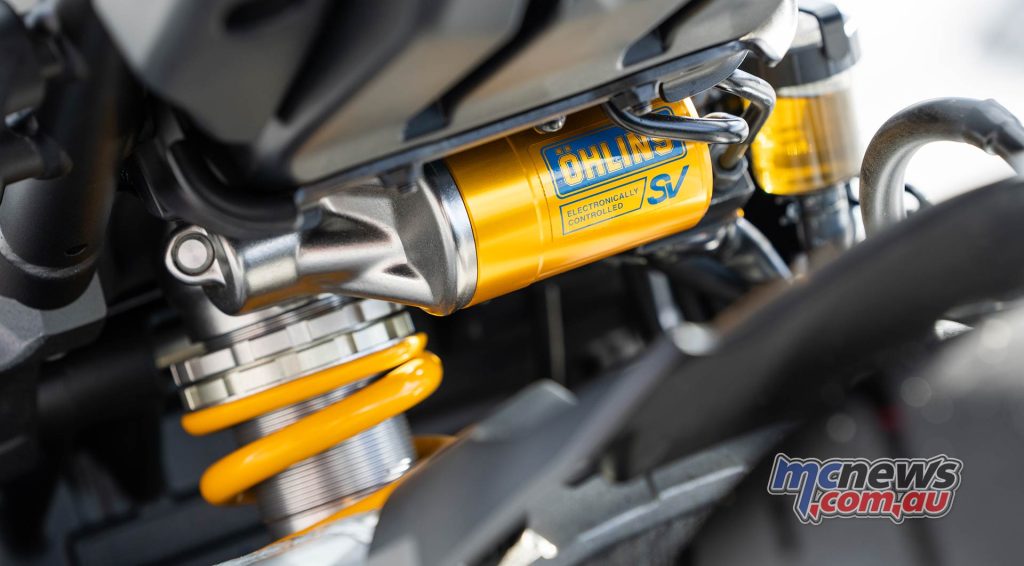
Given the fact you’ve got those excellent Ohlins and, almost more importantly, the ability to change modes so quickly and easily, the $4K difference may indeed make sense to many.
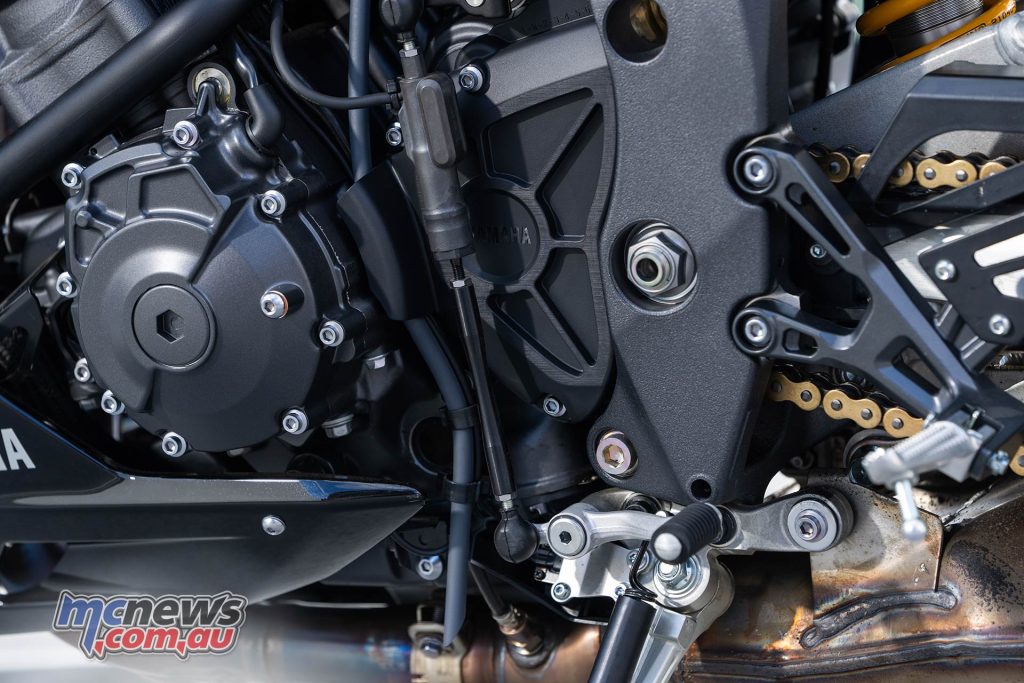
The SP is doubtless better looking than the admittedly Gameboy-ish colours of the base model. That Liquid Metal/Raven (isn’t that a cool name for a paint scheme?) colourway looks great during the day but looks even better under street-lamps at night as the artificial light rebounds off the little tank accents and the evil eye of the daytime running light gives the bike a lairy look to it.
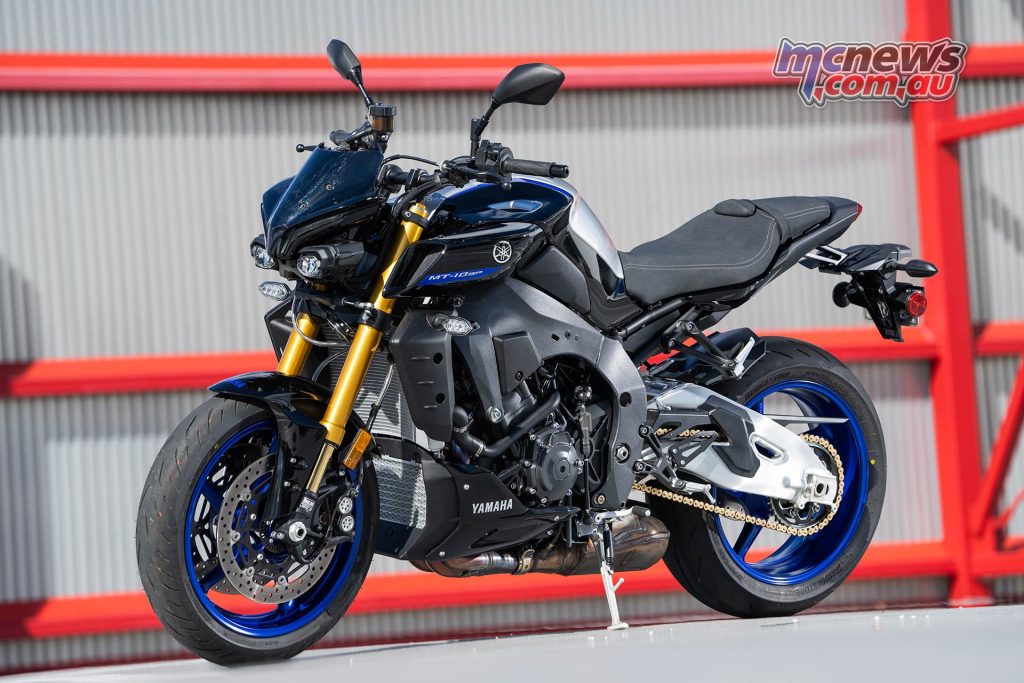
And’s it’s nice to see the SP name live on in Yamaha’s line-up. The first bike I ever took on track was a Yamaha TZR250 SP and it’s one I’d love to have in my garage, so to see the SP name still alive all these years later makes little old me smile.
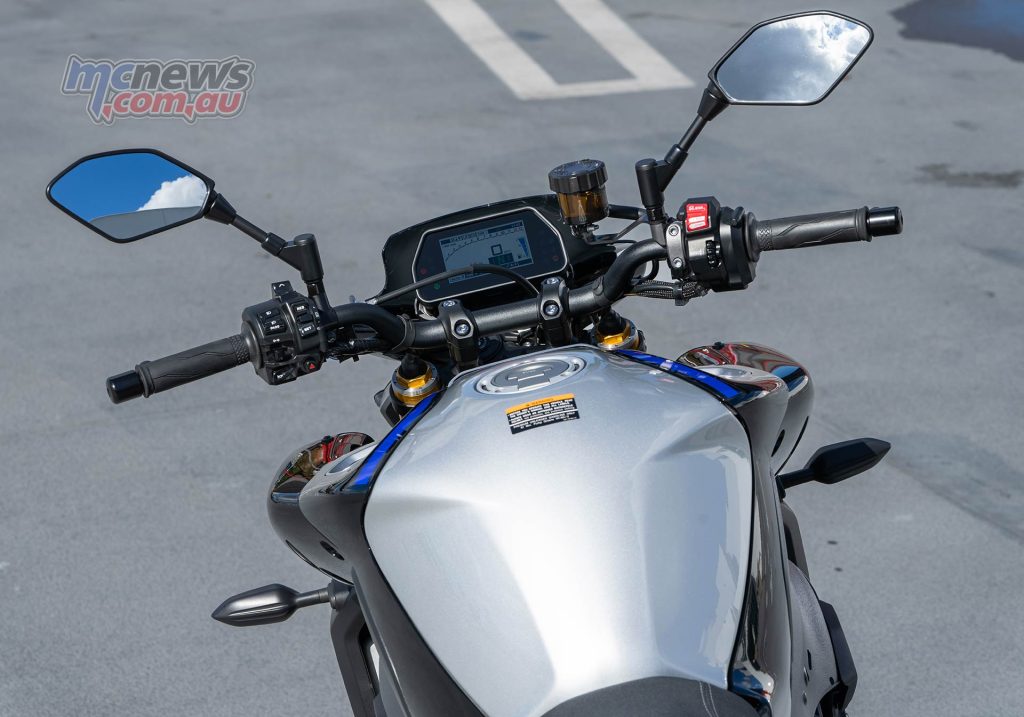
One thing I do love about the MT-10 in either standard or SP trim is it hasn’t gone for a massive revolution in terms of design for Gen II. Yamaha got it pretty nailed with Gen I, which is good news for everyone, even if you’re buying a 2023 MT-10 or MT-10 SP brand new.
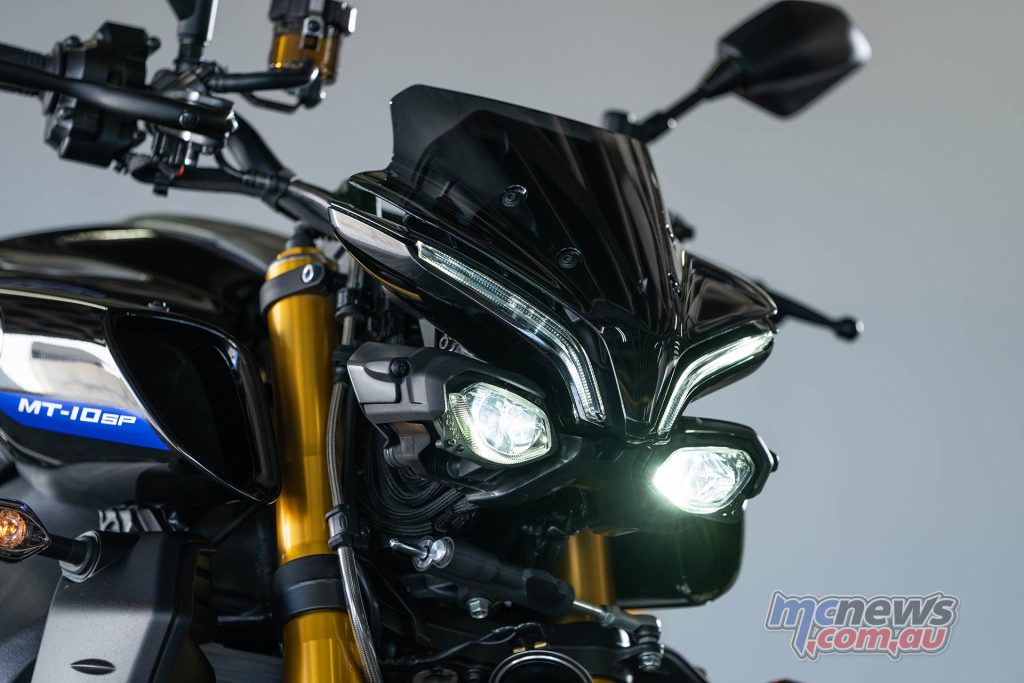
2023 Yamaha MT-10 SP Specifications
| Specifications | |
| Engine Type | 998cc Liquid-cooled, 4-stroke, DOHC, 4-valve |
| Bore x Stroke | 79.0 mm × 50.9 mm |
| Compression Ratio | 12.0 : 1 |
| Lubrication System | Wet sump |
| Fuel Management | Fuel Injection |
| Ignition | TCI |
| Starter System | Electric |
| Fuel Capacity | 17.0 L |
| Final Transmission | Chain |
| Transmission | Constant mesh 6-speed |
| Frame Type | Diamond |
| Suspension Front | Gen-2 Öhlins Electronic Suspension |
| Suspension Rear | Gen-2 Öhlins Electronic Suspension |
| Brakes Front | Hydraulic dual discs, 320 mm – ABS |
| Brakes Rear | Hydraulic single disc, 220mm – ABS |
| Tyres Front | 120/70 ZR 17M/C(58W) Tubeless |
| Tyres Rear | 190/55 ZR 17M/C(75W) Tubeless |
| Length | 2100 mm |
| Width | 800 mm |
| Height | 1165 mm |
| Seat Height | 835 mm |
| Wheelbase | 1405 mm |
| Ground Clearance | 135 mm |
| Wet Weight | 214 Kg |
| RRP | $28,499 MT-10 SP ($24,649 for MT-10) |
Images by Ray Gauger










